Mergers soar in global mining sector
23 February 2024

This month's Agenda also includes: Saudi Arabia transforms mining sector
Register for MEED's guest programme
There was a surge in mergers and acquisition (M&A) activity in the global mining sector in 2023, extending a period of consolidation in the industry that began in the previous decade.
The total value of M&A deals in the industry increased by 75% compared to the previous year, to reach $121bn, according to a report by GlobalData. The number of M&A transactions grew 5% year-on-year to 1,526, while the number of mega deals – which are defined as deals with a transaction value of $1bn or more – stood at 16.
The Asia-Pacific region, excluding China, recorded the highest M&A deal value, surpassing North America as the leading region. Despite this, North America maintained its leadership position in terms of deal volume.
GlobalData attributes the increase in M&A activity to companies seeking to position themselves favourably amid disruptive threats in the industry.
Major deals
The year’s biggest mining M&A deal was recorded in December, when Japanese steelmaker Nippon Steel announced its $14.98bn takeover of Pittsburgh-based United States Steel.
 In November, Swiss commodities giant Glencore announced it will acquire a majority 77% stake in Elk Valley Resources, the steelmaking coal business of Canadian miner Teck Resources. The transaction is valued at $6.93bn, making it the second-biggest deal of 2023.
In November, Swiss commodities giant Glencore announced it will acquire a majority 77% stake in Elk Valley Resources, the steelmaking coal business of Canadian miner Teck Resources. The transaction is valued at $6.93bn, making it the second-biggest deal of 2023.
Nippon Steel Corporation will acquire a 20% stake in Elk Valley Resources, while South Korea’s Posco will take 3%.
Within months of being established, Saudi Arabia’s Manara Minerals entered into a transaction in July with Brazilian mining major Vale to become a 10% shareholder in its $26bn subsidiary, Vale Base Metals.
Manara Minerals teamed up with investment firm Engine No 1, which took a 3% stake in Vale Base Metals. The $3.4bn transaction was the third-biggest M&A deal in 2023.
Manara Minerals was formed in January 2023, when Saudi Arabian Mining Company (Maaden) signed a joint-venture agreement with the kingdom’s Public Investment Fund (PIF) to establish a firm that would invest in mining assets globally. Maaden owns a 51% stake and the PIF holds the other 49% in the company.
Manara Minerals aims to invest in iron ore, copper, nickel and lithium projects as a non-operating partner, taking minority equity positions.
In another key deal, Australia’s MMG entered into a share purchase agreement to acquire the parent company of Botswana’s Khoemacau copper mine, with a deal value of $1.8bn.
 Prominent themes
Prominent themes
Among all mining commodities, gold continued to account for the largest share of M&A activity in 2023, in line with the trend observed in 2022, according to the GlobalData report. Last year, there were 375 gold asset-related deals, with a combined value of $49bn.
The report identified energy transition as the most prominent theme driving M&A deal value in 2023.
The industry is facing headwinds from stricter regulatory, social and environmental requirements when it comes to obtaining licences to develop and operate mining operations. In response, the sector is embracing the shift to a green economy and net-zero emissions.
Most mining companies recognise the need to develop more environmentally friendly mineral exploration technologies to improve relations with local communities and advance mine development.
The estimated $17bn-worth of energy transition-themed M&A transactions last year demonstrates this commitment to a cleaner, greener future by mining companies globally.
The positive momentum of M&A activity is expected to continue into 2024. This year will likely once again see mergers of equals; major mining producers acquiring small producers to strengthen their near-term production profiles; and the strategic acquisition of high-quality, long-life development projects to bolster producers’ development pipelines.
It is also expected that mining companies will continue to prioritise projects that can increase their exposure to critical minerals, including copper, nickel, cobalt and lithium deposits – all of which are an integral part of the global electrification transition that is under way.
Exclusive from Meed
-
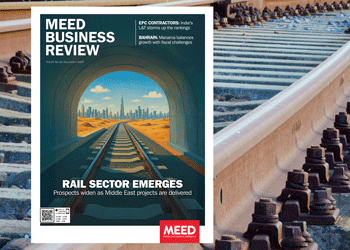 Read the December 2025 MEED Business Review
Read the December 2025 MEED Business Review28 November 2025
-
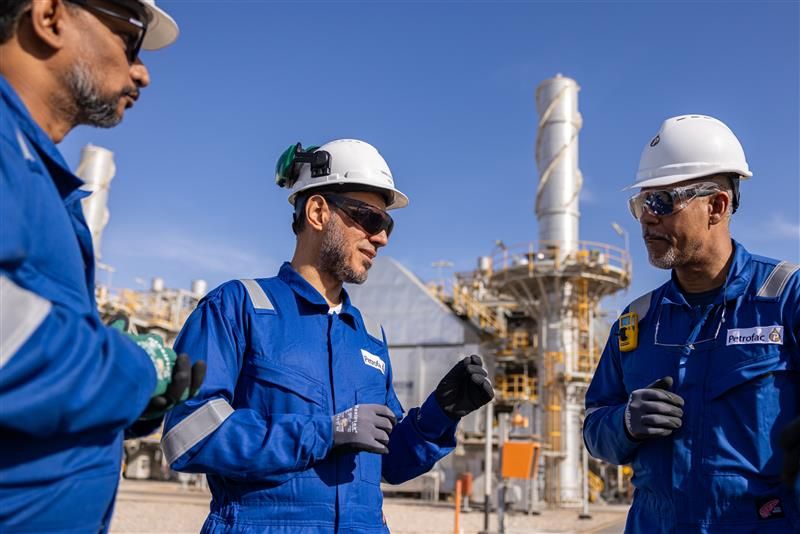 Petrofac’s UAE operations continue after layoffs
Petrofac’s UAE operations continue after layoffs28 November 2025
-
 PDO starts Dhulaima field early phase development project
PDO starts Dhulaima field early phase development project28 November 2025
-
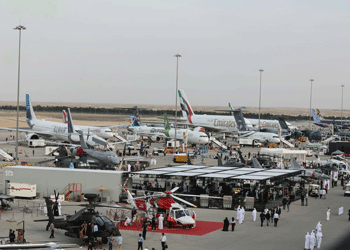 Top deals signed at Dubai Airshow 2025
Top deals signed at Dubai Airshow 202527 November 2025
-
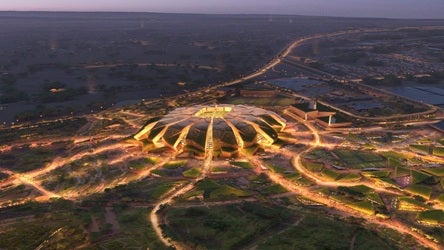 Prequalification begins for Riyadh King Salman Stadium
Prequalification begins for Riyadh King Salman Stadium27 November 2025
All of this is only 1% of what MEED.com has to offer
Subscribe now and unlock all the 153,671 articles on MEED.com
- All the latest news, data, and market intelligence across MENA at your fingerprints
- First-hand updates and inside information on projects, clients and competitors that matter to you
- 20 years' archive of information, data, and news for you to access at your convenience
- Strategize to succeed and minimise risks with timely analysis of current and future market trends
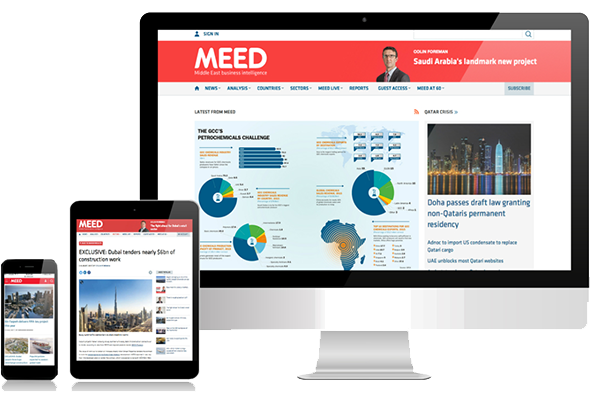
Related Articles
-
 Read the December 2025 MEED Business Review
Read the December 2025 MEED Business Review28 November 2025
Download / Subscribe / 14-day trial access The region boasts a pipeline of over $140bn-worth of railway schemes, according to data from regional projects tracker MEED Projects.
 This puts the GCC at the centre of global rail construction activity, with progress being made on several large-scale rail schemes.
This puts the GCC at the centre of global rail construction activity, with progress being made on several large-scale rail schemes.From the Qiddiya high-speed rail in Saudi Arabia to the planned expansion of Dubai’s metro network and the long-awaited revival of the GCC railway, a new wave of projects is shaping the region’s economic future.
As leading construction, engineering and technology firms either expand or return to the region after years of reduced activity, MEED’s latest issue of MEED Business Review looks at the scale and ambition of ongoing rail projects.
We also consider the region’s growing role as a rail hub, with an increasing need for ongoing servicing, upgrades and new technologies.
This month’s market focus covers Bahrain, where Manama is pushing ahead with diversification amid mounting fiscal constraints and external pressures.
MEED’s latest issue also includes our 2025 EPC contractor ranking, as well as analysis on the cost advantages, technological gains and strong execution giving Chinese contractors a regional edge.
This edition is bursting with features and interviews. The team looks at Libya's ramp up of oil activity; visits the under-construction Aramco Stadium in Khobar as it races towards completion; provides an update on Abu Dhabi's $6bn solar and storage project; and interviews Turki AlShehri, regional vice president for Saudi Arabia and the GCC at French power and water developer Engie.
We hope our valued subscribers enjoy the December 2025 issue of MEED Business Review.

Must-read sections in the December 2025 issue of MEED Business Review include:
 > AGENDA:
> AGENDA:
> Regional rail construction surges ahead
> Middle East becomes a hub as rail networks matureINDUSTRY REPORT:
EPC contractor ranking
> Larsen & Toubro climbs EPC contractor ranking
> Chinese firms expand oil and gas presence> CURRENT AFFAIRS: Oil companies ramp up activity in Libya
> CONSTRUCTION: Aramco Stadium races towards completion
> RENEWABLES: UAE moves ahead with $6bn solar and storage project
> INTERVIEW: Engie pivots towards renewables projects
> BAHRAIN MARKET REPORT:
> COMMENT: Manama pursues reform amid strain
> GVT & ECONOMY: Bahrain’s cautious economic evolution
> BANKING: Mergers loom over Bahrain’s banking system
> OIL & GAS: Bahrain remains in pursuit of hydrocarbon resources
> POWER & WATER: Bahrain advances utility reform
> CONSTRUCTION: Bahrain construction faces major slowdown
> TRANSPORT: Air Asia aviation deal boosts connectivity
> DATABANK: Bahrain’s economy walks precarious path> MEED COMMENTS:
> Bahrain’s willingness to disrupt takes flight with Air Asia
> Projects shift from spending plans to investment opportunities
> Lukoil deal collapse puts $1.8bn of Iraq projects at risk
> Clear rules drive Saudi Arabia's tariff edge> GULF PROJECTS INDEX: UAE fuels Gulf projects expansion
> OCTOBER 2025 CONTRACTS: Saudi Arabia and UAE lead deal signings
> ECONOMIC DATA: November 2025: Data drives regional projects
> OPINION: Riyadh’s American bond
> BUSINESS OUTLOOK: Finance, oil and gas, construction, power and water contracts
To see previous issues of MEED Business Review, please click herehttps://image.digitalinsightresearch.in/uploads/NewsArticle/15168493/main.gif -
 Petrofac’s UAE operations continue after layoffs
Petrofac’s UAE operations continue after layoffs28 November 2025
The UK-headquartered company Petrofac is continuing to work on projects in the UAE after issuing termination notices to around 180 of its staff in the country.
Operations across Petrofac’s portfolio in the UAE are progressing as normal, according to statements sent to several media organisations.
The employees were given notice of their early release from the company on 19 November as part of restructuring measures.
On 27 October, Petrofac announced that it had applied to appoint administrators, a move that potentially put thousands of jobs at risk and increased uncertainty for projects worth billions of dollars in the Middle East and North Africa (Mena) region.
The total value of projects awarded to Petrofac and under construction in the region is $5.83bn, according to information recorded by the regional project-tracking service MEED Projects.
Petrofac also has bids under evaluation for 15 projects in the region worth a total of $19.28bn, according to MEED Projects data.
Ongoing restructuring
On 25 November, Petrofac released a statement saying that it was seeking to appoint administrators to its subsidiary Petrofac International Limited (PIL).
This subsidiary was previously focused on the group’s engineering and construction activities in the Mena region.
In its statement, Petrofac said that its subsidiary would “shortly make an application to the Royal Court of Jersey seeking a letter of request under section 426 of the Insolvency Act 1986”.
It added: “The purpose of this application is to ask the Royal Court of Jersey to issue a letter of request to the High Court of England and Wales and seek its assistance in appointing administrators to PIL.”
Petrofac said that PIL had no ongoing contracts in the Mena region and it intends to redeploy PIL’s 120 staff to other subsidiaries “wherever possible”.
It added: “The administration of PIL is expected to facilitate the purpose of Petrofac Limited’s administration, to help preserve the value of the wider Group and to facilitate the planned M&A solutions.”
Petrofac has said that it is continuing to push ahead with options for alternative restructuring and M&A solutions with key creditors.
https://image.digitalinsightresearch.in/uploads/NewsArticle/15173959/main.jpg -
 PDO starts Dhulaima field early phase development project
PDO starts Dhulaima field early phase development project28 November 2025

Petroleum Development Oman (PDO) has started the prequalification process for engineering, procurement and construction (EPC) works on a project to develop key on-plot facilities as part of an early phase development of the Dhulaima onshore field.
The Dhulaima Upper Shuaiba field is located in the Lekhwair cluster in PDO’s Block 6 concession area. The Dhulaima early phase development project is to be executed on an operation lease contract for a duration of five years, PDO said in the prequalification document.
Majority state-owned PDO floated the prequalification questionnaire on 18 November, and has set a deadline of 7 December for contractors to submit responses.
The broad scope of work on the Dhulaima early phase development project covers EPC, as well as all associated civil, mechanical, piping, electrical, fabrication, instrumentation, control, testing, and pre-commissioning commissioning, and de-commissioning activities of the following on-plot facilities:
- Gas injection compressor package: Complete gas injection compressor package with all auxiliary systems, associated piping, associated instrumentation for safeguarding and control, etc, as complete skid. All the necessary power, utilities as required for the compressor package and its driver shall be included as part of the scope, along with all associated systems, foundations, piping, electrical, instrumentation. Type of compressor and driver to be proposed by the bidders.
- Gas injection manifold package: Complete gas injection manifold including all tie-ins to existing facilities, pipe supports, control valves, and instrumentation.
PDO is the operator of the Block 6 hydrocarbons concession in Oman, which is the sultanate’s largest and most prolific concession. Situated onshore and covering an area of 75,119 square kilometres, Block 6 contains 202 oil fields and 43 gas fields.
The Omani government holds a 60% stake in PDO, with the other shareholders being UK-based Shell (34%), France’s TotalEnergies (4%) and Thai state-owned PTTEP (2%).
https://image.digitalinsightresearch.in/uploads/NewsArticle/15169037/main.jpg -
 Top deals signed at Dubai Airshow 2025
Top deals signed at Dubai Airshow 202527 November 2025
The Dubai Airshow 2025 drew to a close on 21 November, with deals exceeding $202bn, double the $101bn secured at the 18th edition in 2023.
This new milestone reinforces Dubai’s position as a global aviation hub and central force shaping the future of the aviation and space industries, according to a statement from the Government of Dubai Media Office.
The 19th edition of the event, held at Dubai World Central under the theme ‘The Future is Here’, also drew record attendance, welcoming 248,788 visitors, including industry leaders, government officials and aviation specialists from across the globe.
More than 1,500 exhibitors took part, with 440 participating for the first time, along with 490 military and civil delegations from 115 countries. The show also included 21 national pavilions, 98 chalets, an extra 8,000 square metres of display space, and a startup ecosystem with 120 startups and 50 investors.
One of the most globally diverse editions to date, this year’s airshow featured the usual mega-orders, but also a surprise fleet pivot and an emerging picture of the region’s biggest players taking control of their futures by influencing the development of tomorrow’s jets and securing their supply chains.
Anchor customer
UAE national carriers placed orders for 502 aircraft during the five-day event, with Emirates leading the charge. On the first day of the airshow, Emirates announced a $38bn order for 65 new Boeing 777-9 aircraft. The airline also ordered 130 GE9X engines from GE Aerospace, which power the new twin-engined planes.
The deal gives Boeing a boost after the 777-9’s debut was delayed to 2027 – but equally significantly, it provides strong backing for Boeing’s feasibility study to develop the 777-10, a larger variant of its 777X family, as Emirates pushes to replace its Airbus A380 fleet.
“Emirates has been open about the fact that we are keen for manufacturers to build larger capacity aircraft, which are more efficient to operate, especially with projected air traffic growth and increasing constraints at airports,” said Sheikh Ahmed Bin Saeed Al-Maktoum, chairman and chief executive of Emirates Airline and Group.
“We fully support Boeing’s feasibility study to develop the 777-10 and have options to convert our latest 777-9 order to the 777-10 or the 777-8.”
Several days later, Emirates also ordered eight more A350-900 aircraft, worth $3.4bn and powered by Rolls-Royce Trent XWB84 engines, while also urging Airbus to explore a larger version of its A350-1000 wide-body.
Emirates’ commitment to new aircraft at the Dubai Airshow 2025 is worth $41.4bn at list prices, and brings the airline’s total wide-body aircraft orders to 375, with deliveries scheduled through 2038.
It was also announced that Emirates would deploy Starlink Wi-Fi across its entire in-service fleet, beginning with Boeing 777 aircraft in November 2025 and completing the rollout by mid-2027.
Airbus pivot
Flydubai also signed a memorandum of understanding (MoU) with Boeing to purchase 75 Boeing 737 MAX aircraft valued at $13bn. In one of the show’s biggest strategic shifts, a further MoU was signed with Airbus for 150 A321neo aircraft, making the airline a new Airbus customer.
Sheikh Ahmed, also chairman and CEO of flydubai, said this addition would diversify the airline’s narrow-body fleet and “enable flydubai to play a key role in the success of Dubai World Central’s expansion plans, an airport we aim to become the largest airport in the world”.
“We look forward to establishing a strong and enduring partnership between flydubai and Airbus,” he said.
Etihad Airways confirmed an order for 32 new Airbus aircraft, including freighters, marking a significant expansion of its wide-body fleet, while Gulf Air, Bahrain’s national carrier, finalised a firm order for 15 787 Dreamliners with options for three more as the carrier looks to further develop its international network. The order adds three Boeing 787s to the airline’s commitment this July and brings Gulf Air’s order book to 17 of the versatile widebody jets.
Saudi Arabia's emerging airline, Riyadh Air, confirmed a purchase of 120 CFM LEAP-1A engines for its incoming A321neo fleet.
Taking control
In a clear sign that Gulf airlines are taking charge of their supply chains, Emirates and France's Safran Seats signed an MoU to bring a manufacturing and plane seat assembly factory to Dubai. The joint industrial cooperation, the first of its kind, will initially focus on Emirates’ business and economy class seats for cabin retrofit projects, with plans to expand into new aircraft in the future.
“This agreement with Safran marks a pivotal and strategic cooperation that establishes Dubai as an aerospace manufacturing hub,” commented Sheikh Ahmed. “We're bringing world-class seat production capabilities and supply chain to our doorstep, creating highly skilled jobs, and developing capabilities to support Emirates and produce seats for export to other carriers.”
Emirates is also securing its own engine maintenance capabilities, signing an MoU with Rolls Royce to conduct engine maintenance, repair and overhaul on its own A380 fleet at a new plant in Dubai from 2027.
Green airline fuel
Sustainability was a core priority at the airshow, with initiatives including the supply of sustainable aviation fuel (SAF) for participating aircraft, the use of electric and propane-powered ground support equipment in partnership with Jetex, and exhibition halls run entirely on renewable energy.
On the sidelines of the event, Emirates and Enoc Group signed a memorandum of understanding to explore and develop joint initiatives for the supply of SAF to Emirates at its Dubai hub.
Defence deals
Capping the exhibition were the 36 deals signed on behalf of the Ministry of Defence and Abu Dhabi Police by the UAE’s Tawazun council – the national authority mandated to enable, regulate and sustain the UAE’s defence and security industrial ecosystem. Valued at AED25.455bn, the deals included contracts for drones, rescue gear, aircraft parts and support.
https://image.digitalinsightresearch.in/uploads/NewsArticle/15167232/main.gif -
 Prequalification begins for Riyadh King Salman Stadium
Prequalification begins for Riyadh King Salman Stadium27 November 2025
Register for MEED’s 14-day trial access
Saudi Arabia’s Sports Ministry has issued a notice inviting companies to prequalify for a contract to design and build the King Salman International Stadium in Riyadh.
The notice was issued on 26 November, with a prequalification deadline of 16 February.
The stadium will cover an area of about 660,000 square metres (sq m) and will have a seating capacity of 92,000.
The stadium will feature a 150-seat royal suite, 120 hospitality suites, 300 VIP seats and 2,200 dignitary seats.
The plan also includes several sports facilities covering more than 360,000 sq m, including two training fields and fan zones; a closed sports hall; an Olympic-sized swimming pool; an athletics track; and outdoor courts for volleyball, basketball and padel.
The new stadium will host the final of the 2034 Fifa World Cup and will serve as the Saudi national football team’s main headquarters.
US-based architectural firm Populous is the lead architect for the stadium.
Construction of the stadium is expected to be completed by 2029.
The stadium will be located next to King Abdulaziz Park.
Saudi Arabia stadium plans
In August last year, MEED reported that Saudi Arabia plans to build 11 new stadiums to host the Fifa World Cup in 2034.
Eight stadiums will be located in Riyadh, four in Jeddah and one each in Al-Khobar, Abha and Neom.
An additional 10 cities will host training bases. These are Al-Baha, Jazan, Taif, Medina, Alula, Umluj, Tabuk, Hail, Al-Ahsa and Buraidah.
There are expected to be 134 training sites across the kingdom, including 61 existing facilities and 73 new training venues.
The kingdom was officially selected to host the 2034 Fifa World Cup through an online convention of Fifa member associations at the Fifa Congress on 11 December 2024.
https://image.digitalinsightresearch.in/uploads/NewsArticle/15166460/main.jpg

 Saudi Arabia transforms mining sector
Saudi Arabia transforms mining sector

